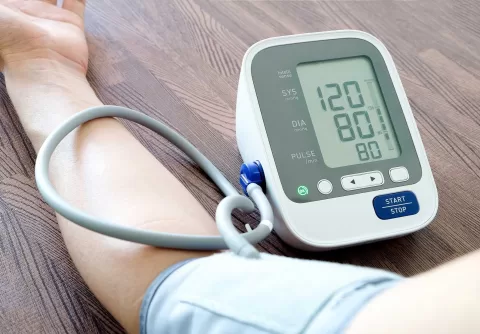Baker’s cyst, also referred to as a popliteal cyst, is a fluid-filled sac that develops behind the knee, often resulting from underlying knee conditions. Commonly associated with knee swelling and discomfort, Baker’s cyst symptoms can include tightness and pain that may hinder mobility. This condition frequently arises in individuals suffering from joint issues such as osteoarthritis or previous injuries. Understanding effective Baker’s cyst treatment options is crucial for those affected, as management strategies can significantly alleviate discomfort and improve quality of life. Early intervention and proper Baker’s cyst management can help individuals regain their mobility and reduce pain.
A popliteal cyst, commonly known as Baker’s cyst, is a condition characterized by the formation of a fluid-filled sac behind the knee. This type of cyst often manifests due to underlying joint problems, leading to symptoms such as knee swelling and discomfort during movement. The management of a popliteal cyst typically involves a combination of non-surgical treatments, including physical therapy and pain relief strategies. Recognizing the signs and symptoms associated with this condition is essential for effective treatment and recovery. Understanding the various approaches to managing a popliteal cyst can empower individuals to take control of their knee health.
Understanding Baker’s Cyst: Definition and Causes
A Baker’s cyst, medically known as a popliteal cyst, emerges as a result of excess synovial fluid accumulation behind the knee joint. This fluid buildup is often secondary to underlying knee conditions, such as osteoarthritis or knee injuries. As the knee joint becomes inflamed or damaged, the body produces more synovial fluid, which can lead to the formation of a cyst that causes noticeable swelling and discomfort.
The prevalence of Baker’s cysts tends to increase with age, particularly in individuals over 40. As the cartilage in the knee wears down, the risk of developing a Baker’s cyst rises due to the body’s compensatory mechanisms. Understanding these causes is essential for effective Baker’s cyst management and subsequent treatment options.
Identifying Baker’s Cyst Symptoms
Recognizing the symptoms of a Baker’s cyst is crucial for timely intervention. The most common symptom is a noticeable swelling behind the knee, which can create a feeling of tightness or pressure in the area. This swelling may fluctuate in size and can be accompanied by varying degrees of pain, particularly during activities that involve bending the knee.
In addition to swelling, patients may experience discomfort while standing, walking, or engaging in physical activities. Understanding these symptoms can help individuals distinguish between a Baker’s cyst and other conditions, such as blood clots or tendonitis, which may present similar signs but require different management strategies.
Effective Treatment Options for Baker’s Cyst
Treatment for a Baker’s cyst typically begins with non-surgical approaches aimed at alleviating symptoms and improving knee function. Common initial treatments include physical therapy, which can strengthen the muscles surrounding the knee and enhance flexibility. Ice application and rest are also recommended to reduce inflammation and manage pain effectively.
For cases where these conservative treatments do not provide sufficient relief, fluid drainage through aspiration can be considered. This procedure involves using a needle to remove excess fluid from the cyst, offering immediate symptom relief. If all else fails, surgical removal may be necessary to eliminate the cyst and address the underlying knee issues.
The Role of Diagnostic Imaging in Baker’s Cyst Evaluation
Accurate diagnosis of a Baker’s cyst often relies on ultrasound imaging, which allows healthcare providers to visualize the cyst and assess its size and fluid content. This imaging technique is crucial in confirming the presence of a cyst and distinguishing it from other potential causes of knee swelling, such as blood clots or tumors.
By employing diagnostic imaging, doctors can create a tailored treatment plan that addresses the specific needs of the patient. This careful evaluation is essential for effective Baker’s cyst management, ensuring that patients receive the appropriate care based on the severity and underlying causes of their symptoms.
Exercises and Lifestyle Modifications for Baker’s Cyst Management
Incorporating specific exercises into a daily routine can significantly aid in managing the symptoms of a Baker’s cyst. Knee flexion and extension exercises are particularly beneficial as they help strengthen the muscles around the knee joint, providing better support and stability. Additionally, low-impact activities such as swimming or cycling can promote overall joint health without exacerbating symptoms.
Consulting with a physical therapist can enhance the effectiveness of these exercises, ensuring that they are tailored to individual needs. Furthermore, lifestyle modifications such as maintaining a healthy weight and avoiding high-impact sports may also diminish the risk of exacerbating a Baker’s cyst and improve overall knee function.
Frequently Asked Questions
What are the common symptoms of a Baker’s cyst?
Common symptoms of a Baker’s cyst include swelling behind the knee, tightness, and varying degrees of pain. Patients may also experience difficulty flexing the knee, especially if the cyst is large or associated with underlying knee conditions like osteoarthritis.
How is a Baker’s cyst treated?
Baker’s cyst treatment typically involves non-surgical methods such as physical therapy, rest, ice application, and over-the-counter pain relievers. In cases of significant discomfort, fluid drainage via aspiration may be performed, and if conservative measures fail, surgical removal of the cyst may be necessary.
What causes a Baker’s cyst to form?
A Baker’s cyst often forms due to underlying knee conditions, particularly those causing joint damage, such as osteoarthritis or injuries. It can also occur due to inflammatory conditions affecting the knee joint, leading to increased fluid production.
Can exercises help manage symptoms of a Baker’s cyst?
Yes, specific exercises can help manage Baker’s cyst symptoms. Knee flexion and extension exercises, hamstring stretches, and low-impact activities like swimming or cycling can strengthen muscles around the knee, improve flexibility, and reduce discomfort.
How is a Baker’s cyst diagnosed?
A Baker’s cyst is typically diagnosed using ultrasound imaging, which confirms the presence of fluid behind the knee and assesses the size of the cyst. This diagnostic tool helps differentiate the cyst from other conditions that may cause similar symptoms, such as blood clots.
| Key Point | Details |
|---|---|
| Definition | A fluid-filled sac behind the knee, often due to underlying knee conditions. |
| Prevalence | More common in adults over 40, often linked to osteoarthritis or injuries. |
| Symptoms | Swelling, tightness, and pain in the knee area, affecting movement. |
| Non-Surgical Treatments | Includes physical therapy, rest, ice application, and pain relievers. |
| Fluid Drainage | Aspiration may be done for significant discomfort or mobility issues. |
| Surgical Options | Considered when conservative treatments fail; involves cyst removal. |
| Diagnostic Imaging | Ultrasound helps confirm the cyst’s presence and assess knee joint health. |
| Differentiating Conditions | Important to distinguish from blood clots, which require urgent care. |
| Exercises | Knee flexion, hamstring stretches, and low-impact activities help manage symptoms. |
Summary
Baker’s Cyst is a condition characterized by a fluid-filled sac that develops behind the knee, often resulting from underlying knee issues such as osteoarthritis. This cyst can lead to noticeable swelling, tightness, and varying degrees of pain, particularly during movement. Effective management includes a combination of non-surgical treatments like physical therapy, rest, and pain relief options. In cases where symptoms persist, procedures such as aspiration or surgery may be considered. Understanding the nature of Baker’s cysts, their causes, and available treatments is crucial for improving the quality of life for those affected. Prompt medical evaluation is advised if severe symptoms arise, ensuring the right treatment path is taken.
The content provided on this blog (e.g., symptom descriptions, health tips, or general advice) is for informational purposes only and is not a substitute for professional medical advice, diagnosis, or treatment. Always seek the guidance of your physician or other qualified healthcare provider with any questions you may have regarding a medical condition. Never disregard professional medical advice or delay seeking it because of something you have read on this website. If you believe you may have a medical emergency, call your doctor or emergency services immediately. Reliance on any information provided by this blog is solely at your own risk.








